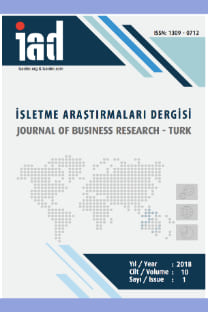Evaluating Predictive Models in the Orienteering Problem with Stochastic Profits:A Simulation Study
Evaluating Predictive Models in the Orienteering Problem with Stochastic Profits:A Simulation Study
___
- Akaike, H. (1998). Information theory and an extension of the maximum likelihood principle. In Selected papers of hirotugu akaike, pages 199–213. Springer.
- Arlot, S., Celisse, A. (2010). A survey of cross-validation procedures for model selection. Statistics surveys, 4:40– 79.
- Bastani, H. and Bayati, M. (2015). Online decision-making with high-dimensional covariates. Forthcoming in Operations Research.
- Besbes, O., Phillips, R., and Zeevi, A. (2010). Testing the validity of a demand model: An operations perspective. Manufacturing & Service Operations Management, 12(1):162–183.
- Campbell, A. M., Gendreau, M., and Thomas, B. W. (2011a). The orienteering problem with stochastic travel and service times. Annals of Operations Research, 186(1):61–81.
- Campbell, A. M., Gendreau, M., and Thomas, B. W. (2011b). The orienteering problem with stochastic travel and service times. Annals of Operations Research, 186(1):61–81.
- Chen, W., Liu, T.-Y., Lan, Y., Ma, Z.-M., and Li, H. (2009). Ranking measures and loss functions in learning to rank. Advances in Neural Information Processing Systems, 22:315–323.
- Claeskens, G., Hjort, N. L. (2008). Model selection and model averaging. Cambridge Books.
- den Boer, A. V. and Sierag, D. D. (2020). Decision-based model selection. European Journal of Operational Research. 00006.
- Evers, L., Glorie, K., van der Ster, S., Barros, A. I., and Monsuur, H. (2014). A two-stage approach to the orienteering problem with stochastic weights. Computers & Operations Research, 43:248–260.
- Geisser, S. (1975). The predictive sample reuse method with applications. Journal of the American statistical Association, 70(350):320–328.
- Golden, B. L., Levy, L., and Vohra, R. (1987). The orienteering problem. Naval Research Logistics (NRL), 34(3):307–318.
- Ilhan, T., Iravani, S. M. R., and Daskin, M. S. (2008). The orienteering problem with stochastic profits. IIE Transactions, 40(4):406–421. 00018.
- Liyanage, L. H. and Shanthikumar, J. G. (2005). A practical inventory control policy using operational statistics. Operations Research Letters, 33(4):341–348.
- Ramamurthy, V., George Shanthikumar, J., and Shen, Z.-J. M. (2012). Inventory policy with parametric demand: Operational statistics, linear correction, and regression. Production and Operations Management, 21(2):291–308.
- Rissanen, J. (1978). Modeling by shortest data description. Automatica, 14(5):465–471.
- Schwarz, G. (1978). Estimating the dimension of a model. The annals of statistics, 6(2):461–464.
- Tsiligirides, T. (1984). Heuristic methods applied to orienteering. Journal of the Operational Research Society, 35(9):797–809.
- Zhang, S., Ohlmann, J., and Thomas, B. (2014a). Dynamic Orienteering on a Network of Queues. Tippie College of Business Publications. 00000.
- Zhang, S., Ohlmann, J. W., and Thomas, B. W. (2014b). A priori orienteering with time windows and stochastic wait times at customers. European Journal of Operational Research, 239(1):70–79.
- ISSN: 1309-0712
- Yayın Aralığı: 4
- Başlangıç: 2009
- Yayıncı: Melih Topaloğlu
Financial Performance Measurement of Logistics Companies Based on Entropy and Waspas Methods
Hilal H. ERDOĞAN, Gökhan KIRBAÇ
Fahriye MERDİVENCİ, Mahmut Burak ERTURAN
Fatih SOBACI, Hande ÜNÜVAR, Osman YALAP, Elif BAYGIN
Beyhan Hilal YASLIDAĞ, Mehmet DÜZEN
İmalat İşletmelerinde Maliyet ve Performans Planlamasına İlişkin Bir Uygulama
Sağlık Hizmetlerinde Yönetim Muhasebesi Alanında Bibliyometrik Bir Analiz
Seyhan ÇİL KOÇYİĞİT, Semra ALTSOY
